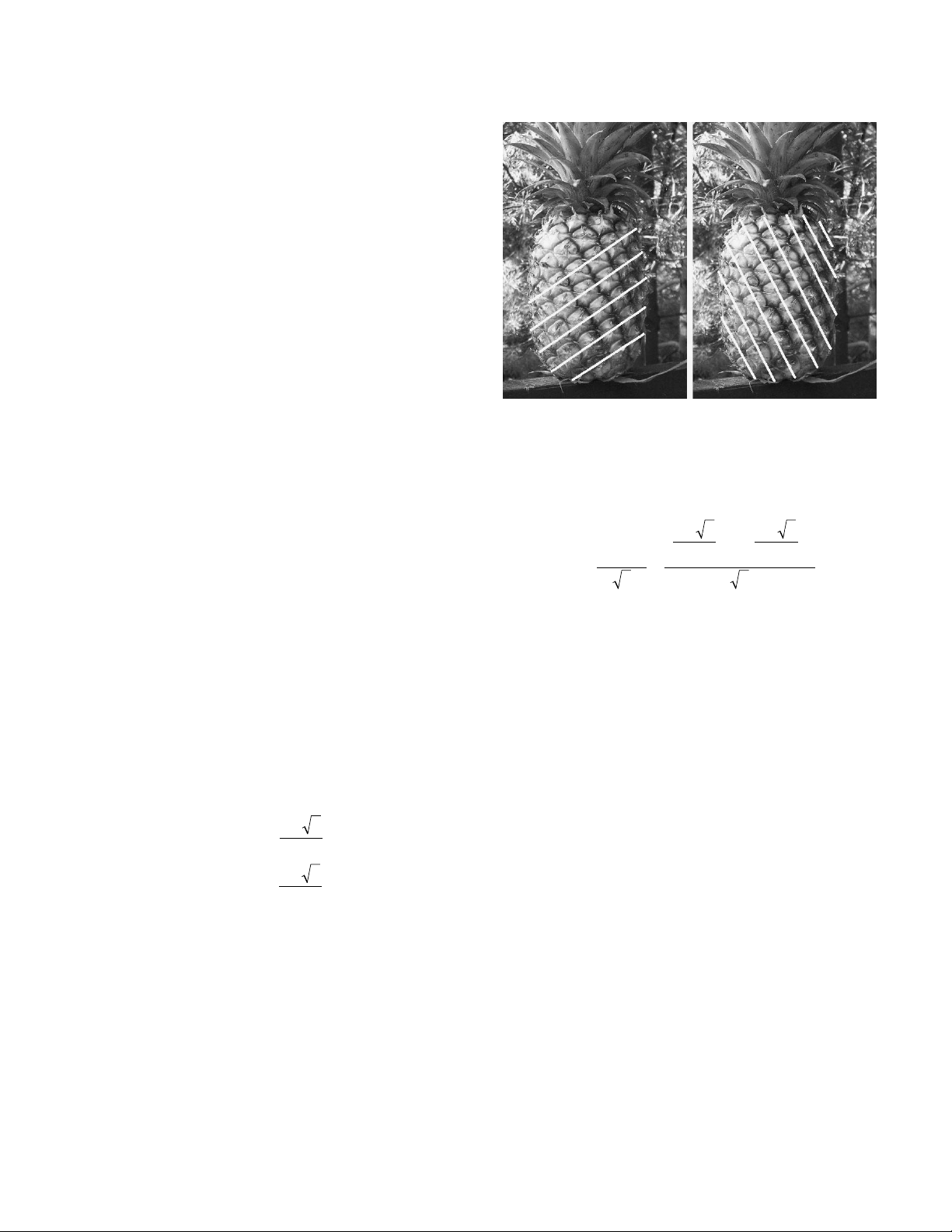
Fn+2
––
2n
Fields medals 193
This pineapple has five diagonal rows of hexagonal scales in one
direction and eight rows in the other direction. (Note that the
sixth unmarked row of scales in the left picture is not a new row;
it is a continuation of the bottommost row of scales.)
sequence. For example, there are Fnways to climb n – 1
steps, one or two steps at a time (consider beginning the
climb with either a single step or a double step). There
are also Fnways to tile a 1 ×(n– 1) row of squares with
1 ×1 tiles and 1 ×2 dominoes, and there are Fn
sequences of 0s and 1s n-digits long beginning and end-
ing with 1 and containing no two consecutive 0s.
Regarding a 1 as “tails” and 0 and “heads,” and
ignoring the initial and final 1s, this latter example can
be used to show that the
PROBABILITY
of not getting
two heads in a row when tossing a coin ntimes is
. One can also use it to show that there are Fn+2
subsets of {1,2,…,n} lacking two consecutive numbers
as members.
Perhaps the most surprising appearances of
Fibonacci numbers occur in nature. The seeds in a sun-
flower’s head, for example, appear to form two systems
of spirals—often with 55 spirals arcing in a clockwise
tilt, and 34 spirals with a counterclockwise tilt. (Large
species of sunflowers have 89 and 144 spirals, again
consecutive Fibonacci numbers.) This appears to be
typical of all natural objects containing spiral floret,
petal, or seed patterns: pineapples, pinecones, and even
the spacing of branches around the trunk of a tree. The
botanical name for leaf arrangement is phyllotaxis.
It is useful to ask whether it is possible to find a
value xso that the sequence 1,x,x2,x3,… satisfies the
same recursive relationship as the Fibonacci numbers,
namely that every term after the second equals the
sum of the two preceding terms. This condition there-
fore requires xto be a number satisfying the equation
1 + x= x2. By the
QUADRATIC
formula there are two
solutions:
It follows that any combination of the form aϕn+ bτn
satisfies the same recursive relation as the Fibonacci
sequence. Choosing the constants aand bappropri-
ately, so that the first two terms of the sequence pro-
duced are both 1, yields the following formula, called
Binet’s formula, for the nth Fibonacci number:
(It is surprising that this formula yields an integer for
every value of n). One can use this result to show that
the ratio of Fibonacci numbers approaches the
value ϕas nbecomes large. This happens to be the
GOLDEN RATIO
.
The properties of the Fibonacci numbers are so
numerous that there is a mathematical periodical, The
Fibonacci Quarterly, devoted entirely to their contin-
ued study.
See also P
ASCAL
’
S TRIANGLE
;
POLYOMINO
.
field See
RING
.
Fields medals These are prizes awarded to young
researchers for outstanding achievement in mathemat-
ics. The awards are regarded as equivalent in stature to
Nobel Prizes (which do not exist for mathematics).
“International medals for outstanding discoveries in
mathematics” were first proposed at the 1924 Interna-
tional Congress of Mathematicians meeting in Toronto.
Fn
––
Fn–1
Fn
nn
nn
=−=
+
⎛
⎝
⎜⎞
⎠
⎟−−
⎛
⎝
⎜⎞
⎠
⎟
φτ
5
15
2
15
2
5
φ
τ
=+
=−
15
2
15
2